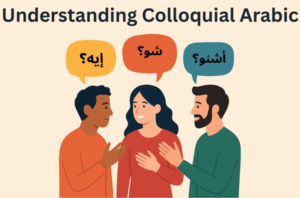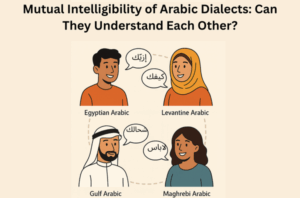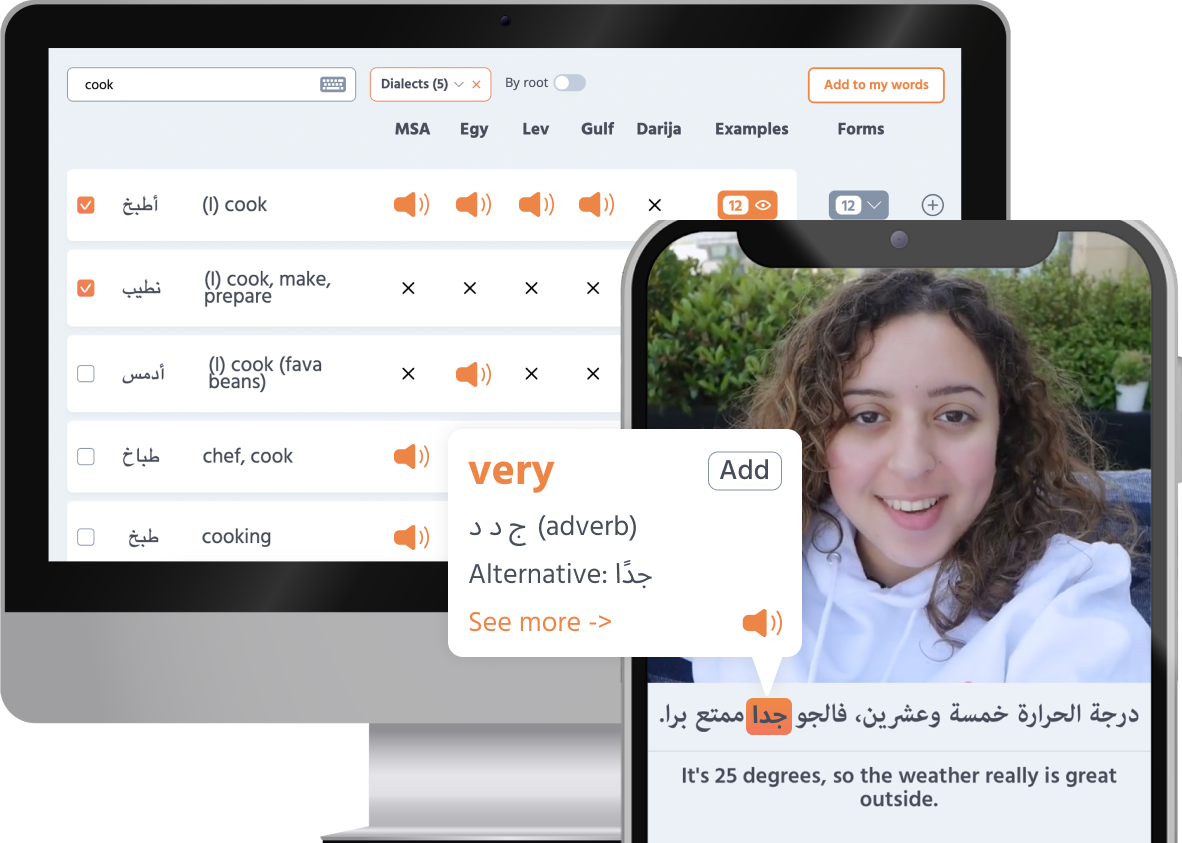Arabic is a language built on a system of roots , offering both structure and elegance. The concept of roots is central to understanding both standard and colloquial Arabic, unlocking its rich vocabulary and cultural depth. The root system is something that Arabic has in common with other Semitic languages, such as Hebrew . This article dives into the importance of Arabic roots and provides practical tips on how to identify them. Whether you’re a beginner or an advanced learner, this foundational knowledge will enhance your grasp of the language.
What are Arabic roots? In MSA , most words are derived from a three-consonant root system , known as جذر
(root). These roots carry a core meaning, which branches out into related words by applying various patterns and affixes. For example, the root ك ت ب
relates to writing, forming words like كتاب
(book), كاتب
(writer), and مكتبة
(library).
This clip is from a video that explains Arabic roots in a clear and engaging way. Why are Arabic roots important? Understanding roots is essential for several reasons:
Appreciating the language : The root system highlights the creative and poetic nature of Arabic, offering a deeper appreciation of its linguistic beauty .Unlocking vocabulary : Recognizing roots helps you guess the meanings of new words. If you know علم
means (knowledge), words like عالم
(scholar) or معلومات
(information) become much easier to understand since they share the same root.Improving grammar : Roots provide insight into verb conjugations and noun forms, simplifying your study of Arabic grammar .Boosting memory : Grouping related words by their roots strengthens your memory through logical connections. By learning words in groups that share the same word root, it becomes much easier to understand and connect those groups of words.
How to identify Arabic roots To find the root of an Arabic word , you need to identify the base consonants that form the core meaning. Here’s a step-by-step guide to help you uncover the roots:
Understand the word structure Arabic words are often formed by adding prefixes, suffixes, and infixes to a root. To identify the root, it’s helpful to know the ten common extra letters حروف الزيادة
that can appear in Arabic words. These letters are:ا
س
أ
ل
ت
م
و
ن
ي
ه
, and they can be memorized using the phrase: سألتمونيها
.
Prefixes: مـ
as in مكتب
(office), تـ
as in تعلم
(he learnt), أ
as in أعلم
(he informed)
Suffixes: ـة
as in مكتبة
(library), ـو
and ا
as in يكتبوا
(they write), ين
as in معلمين
(male teachers), ـات
as in معلمات
(female teachers).
Infixes: يـ
as in كتيب
(booklet), ا
as in كتاب
(book)
The root is usually three consonants (triliteral), but some roots have four (quadriliteral), such as ز ل ز ل
(to shake violently) from which comes the word زلزال
(earthquake).
The three-consonant root is referred to as the ف ع ل
root, with the ف
corresponding to the first letter of the root and the ع
and ل
to the second and third letters correspondingly. The four-consonant root is referred to as فعلل with the last ل
corresponding to the fourth letter. The فعل
or فعلل
forms are called وزن
. Knowing the forms of Arabic words is important to facilitate learning different word patterns.
In the above examples, the word كتب
takes the form فعل
, and the word زلزل
takes the form فعلل
Strip away affixes Remove any added letters that modify the root. For example:
Word : مكتبة
(library)
Remove مـ
(prefix) and ـة
(suffix)
Root : ك ت ب
(to write)
Word : استقبال
(reception)
Remove س
ا
ت
(prefix)
Remove ا
(infix)
Root : ق ب ل
(to accept)
Learn a new Arabic root and discover useful vocabulary derived from it by watching this video. Focus on verbs Verbs are often easier to break down into roots because they follow standard patterns.
Example : يكتب
(he writes)
Remove يـ
(prefix for present tense)
Root : ك ت ب
Consult an Arabic root dictionary Arabic roots dictionaries معجم
list words by their roots in Arabic alphabetical order, with all the different word patterns derived from the word root. Look up the main consonants in the word to find its root and all related word patterns with their meanings.
Practice with patterns Many Arabic words follow predictable patterns that help in identifying roots. Learn common patterns like:
فعّل
: Intensive or causative verb formمفعل
: Place or toolافتعل
: Reflexive verb form
Once you are familiar with these patterns, you can reverse-engineer the root. We are going to discuss common Arabic word patterns in depth in the upcoming articles.
Learn common roots Learning commonly used roots (e.g, د ر س
ك ت ب
ع ل م
) helps you spot them faster in new words.
Example practice
Word : تعليم
(education).
Remove تـ
(prefix).
Remove يـ
(infix).
Root : ع ل م
(related to knowledge).
Word : مشارك
(participant).
Remove مـ
(prefix).
Remove ا
(infix).
Root : ش ر ك
(to share).
Tips for Mastery
Start with simple words and work your way up to more complex ones.
Check your guesses with dictionaries or native speakers.
Pay attention to context. Some roots can have multiple meanings.
With practice, identifying roots will become second nature, unlocking the secrets of Arabic vocabulary!
Tools and resources to master Arabic roots
Root-Based Dictionaries : Playaling’s Audio Dictionary includes roots for words in Levantine, Egyptian, MSA, Gulf, and Darija, along with detailed definitions, contextual examples, and human voice pronunciations for each word. Livingarabic is another good cross-dialectical dictionary for learning and exploring Arabic roots. Finally, Aratools and the Oxford Arabic Dictionary are great for MSA.Online Platforms : Imagine having access to fun, engaging Arabic videos—anytime you want—while exploring in-depth insights into words and their roots. That’s exactly what Playaling offers. Below are a few examples of root-focused videos:
Note: All root pronunciations and derived word recordings mentioned in this article are provided in Modern Standard Arabic (MSA). These roots are shared across most Arabic dialects, though pronunciation may vary by region. To explore more and hear the differences in context, sign up for your free trial today.
Final thoughts Mastering Arabic roots is a total game-changer for language learners. It improves your vocabulary, strengthens your grammar skills, and reveals the underlying logic of the language. By focusing on roots, you learn Arabic more effectively and appreciate its subtleties more. Start practicing root identification today, and you’ll see the language open up in entirely new ways.
Oh, and by the way… If learning Arabic at your own pace, with fun, real-world videos sounds like your style, then Playaling could be exactly what you’re looking for!
With Playaling, you’ll dive into any major Arabic dialect or MSA. Our diverse range of videos has it all—from everyday conversations and cultural moments to music videos, TV and movie clips, influencer content, news broadcasts, and inspiring talks.
Our interactive captions let you tap any word for instant translations, context, and audio. So, real Arabic content becomes accessible with just a click. Miss something? No problem—rewind and listen as often as you need, or hover over subtitles for quick definitions.
Spot a word you want to learn? Save it to your personalized word set, or dive into curated sets for focused practice and easy review.
Interactive exercises let you dive in and practice what you’ve learned.
Need to look something up? The Audio Dictionary has you covered with clear human pronunciations and real world examples.
It’s a learning experience that keeps you engaged, bringing authentic, real-world Arabic closer to you every step of the way.
Give it a try!









